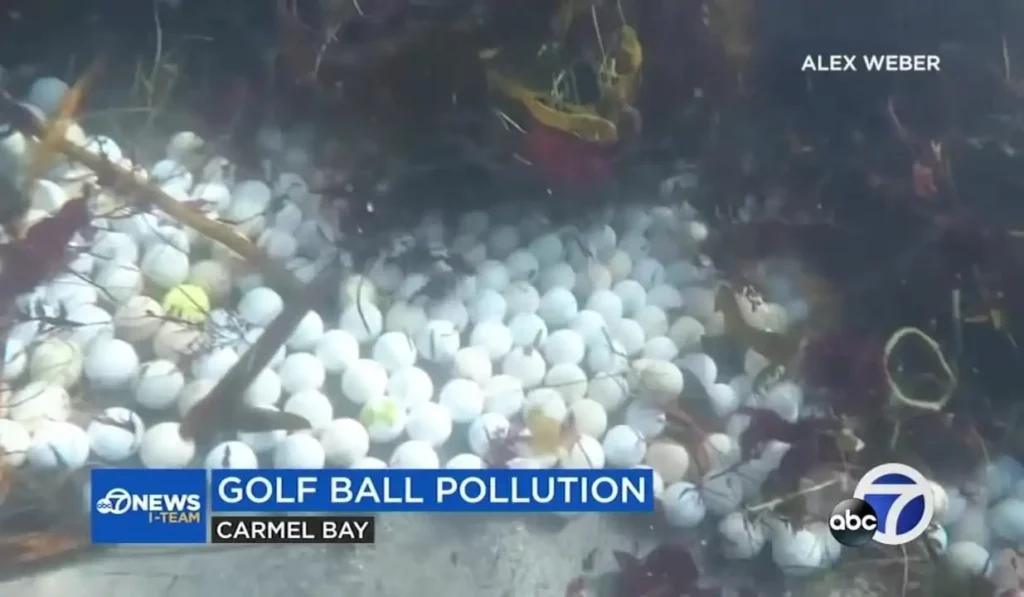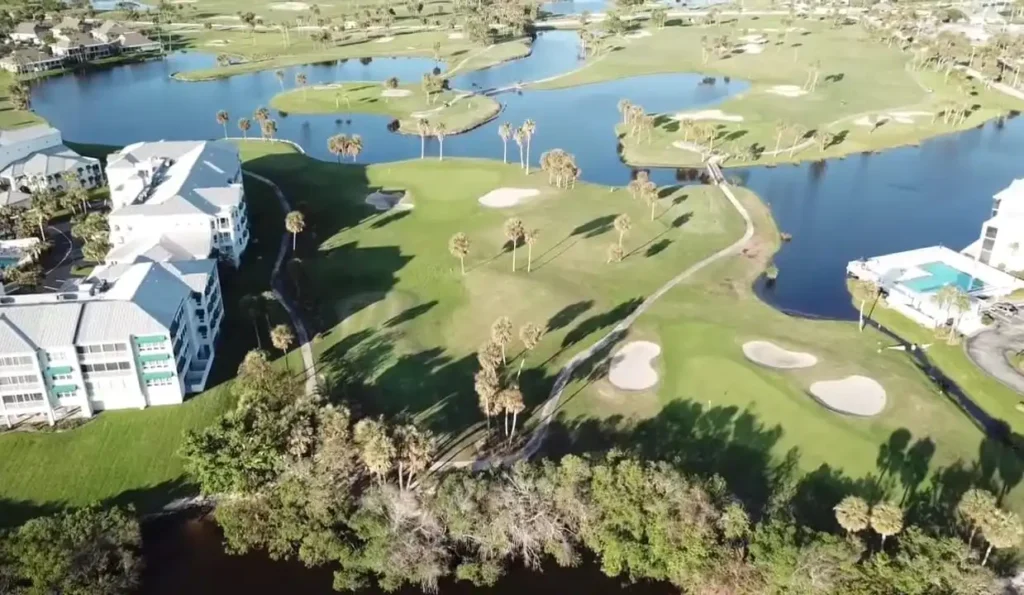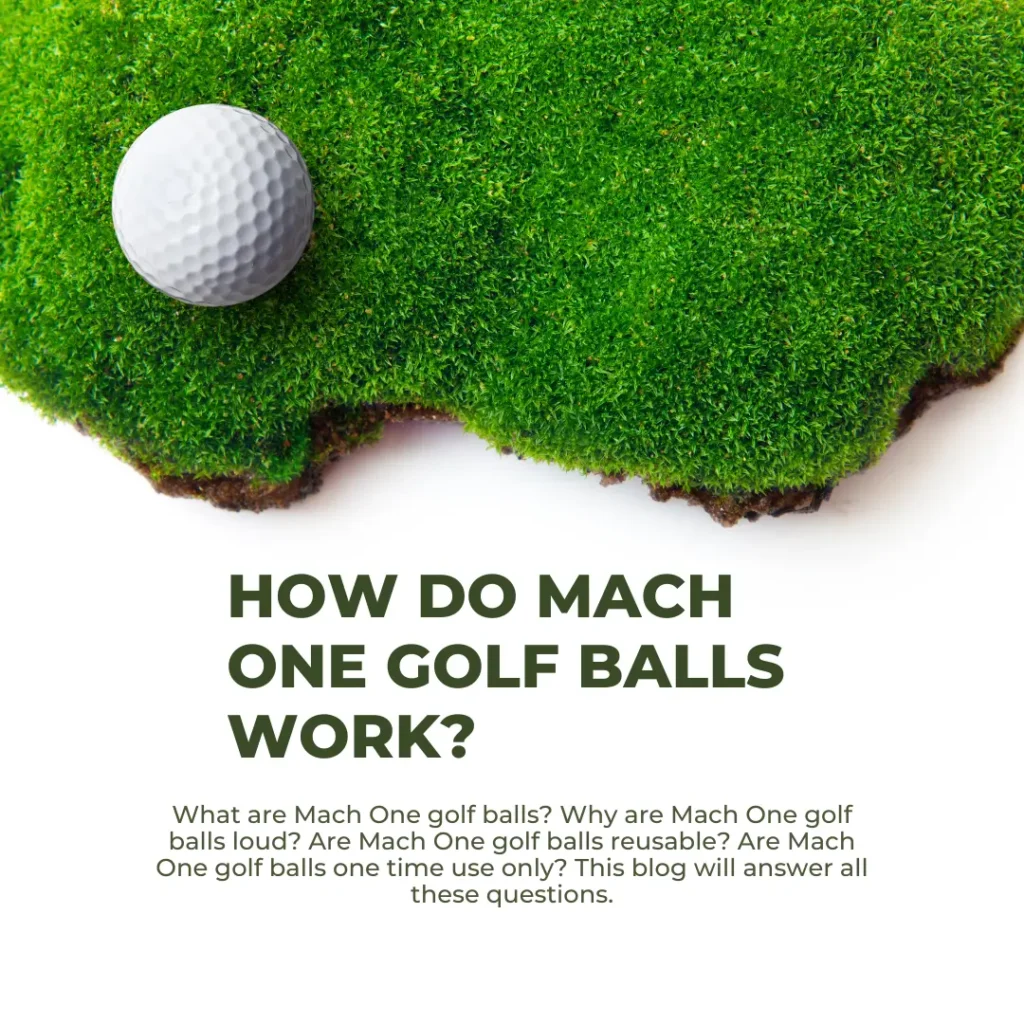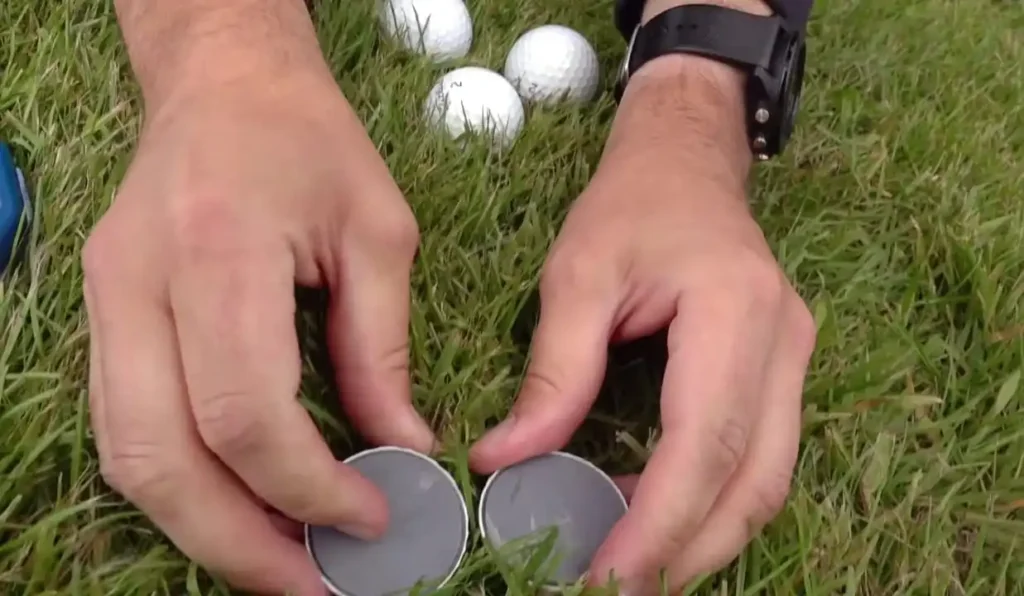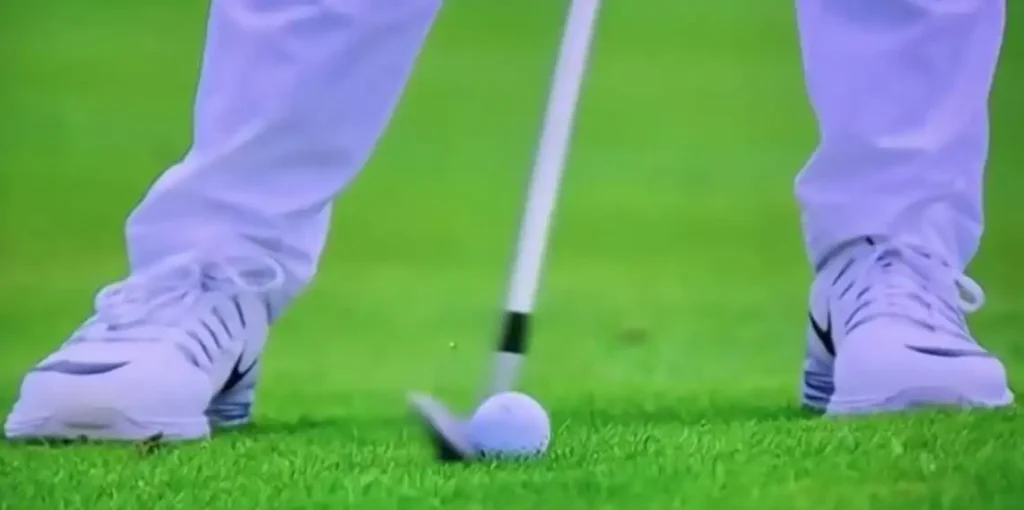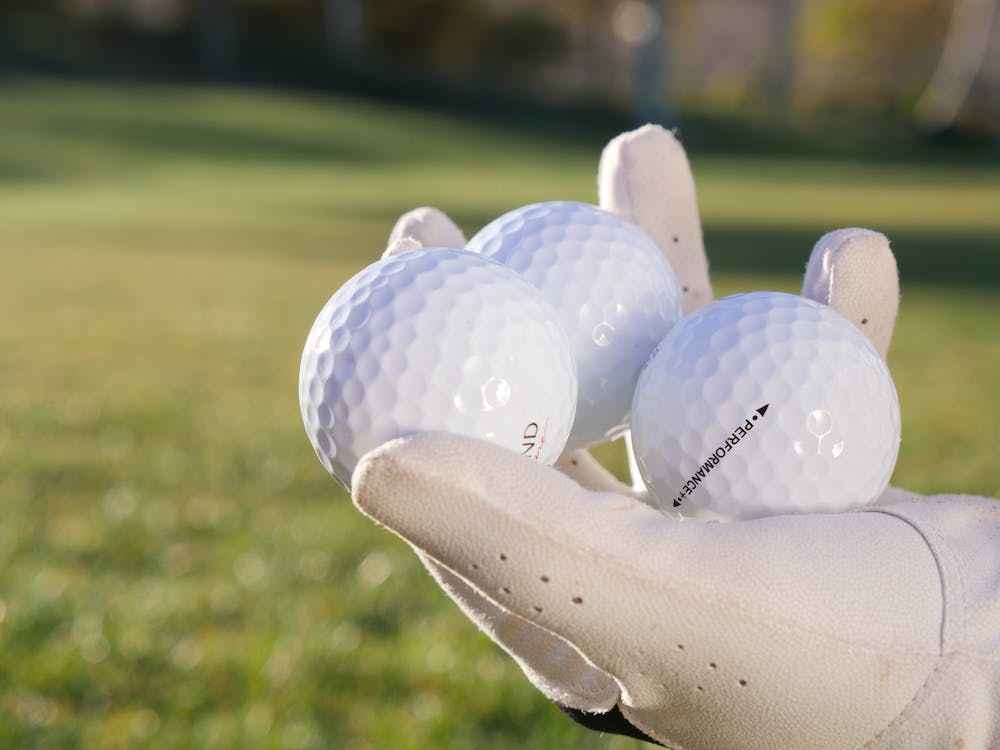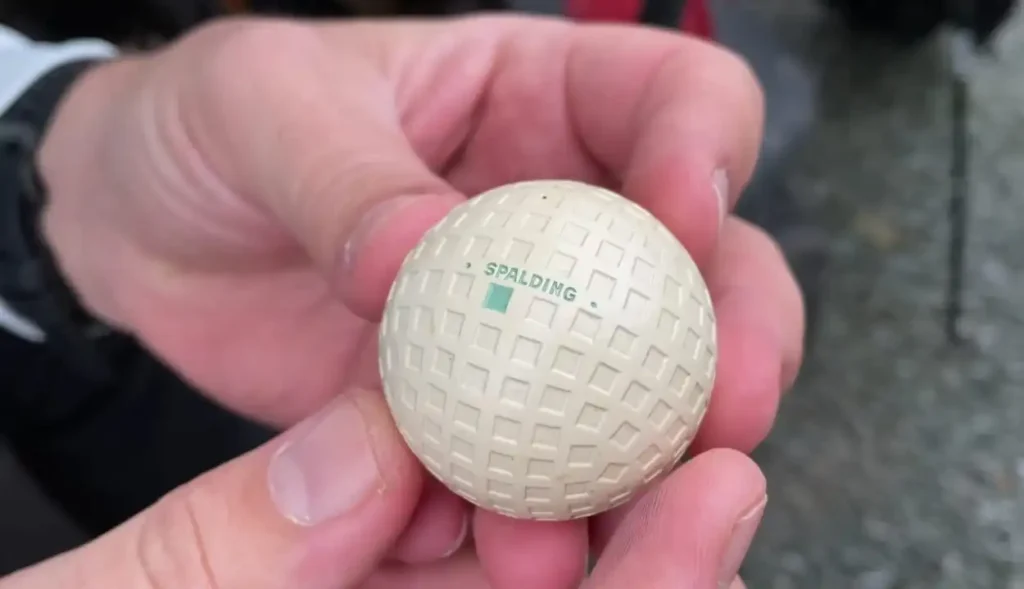One of the many arguments presented by the critics of golf includes the environmental impact of this game. Is golf good for the climate? Are golf balls biodegradable? It’s important to discuss the environmental effect of golf balls to better understand this game’s long-lasting influence on our fragile ecosystem. Do golf balls go bad over time or do they linger underwater for centuries? You’ll notice that this article is mostly about the ecological impact of golf balls, but we’ll cover the far-reaching impact of the whole game of golf here as well. So, without further ado, here’s the environmental impact of golf balls for you:

The Environmental Effect of Golf In 2024
The Environmental Effect Of Golf Balls
How does golf affect our environment? We know that 300 million golf balls are discarded in the US alone, many of which find their way into the ocean. A 2009 Dutch study shows that dimpled spheres may take a century to a millennium to decompose in the ocean, making the ecological effect of golf balls pretty damn bad. In short, here’s how golf balls curse the planet:
Microplastic pollution
When golf balls are dumped into the ocean, they release their core which is just a 300-yard-long stretch of rubber. It slowly turns into microplastics and then these microplastics are consumed by marine animals. When ingested by wildlife, microplastic leads to malnutrition among the fish, creating a food crisis underwater.
Microplastic pollution makes its way up the food chain when a fish that’s eaten these microplastics is eaten by a larger animal, a human in some cases. That’s how we’re making our food toxic. Now, golf balls only contribute insignificantly to this pollution. But we can still fight this pollution by not leaving golf balls underwater for long.
That’s why fishing out waterlogged dimpled spheres is a great way to lessen the environmental effect of golf balls in the world right now.
Water Hazards
When golf balls end up in water bodies, they release toxic chemicals. These chemicals make these water bodies harmful to human touch. When dumped into the ocean, these golf balls will keep making the water unsafe for human consumption. Aquatic ecosystems getting polluted is no man’s paradise. So, golf balls pose a huge (yet easily preventable) threat to waterfowl who may accidentally ingest these dimpled spheres.
One of the most dangerous environmental challenges of golf balls is the chemical leaching risk. For instance, zinc used to make the golf ball core can leach into water, affecting its quality. So, this is the environmental effect of golf balls you must consider.
Habitat Disruption
A harmful environmental effect of golf courses involves habitat disruption. As we’ve explained in an article before, many golf courses are being constructed in the world today, mainly in wealthy countries like ours.
A study shows that 15 golf course construction projects are finished annually in the United States alone. So, clearing land to build a golf course can lead to deforestation and wetland destruction. Wild animals lose their habitats in this scenario. Do golf balls go bad? Yes, they do. Why, aren’t golf balls biodegradable? No, once left there, golf balls contribute to litter and take a thousand years to decompose. That’s why they are bad for the environment.
Pesticide Use
When discussing any single harmful environmental effect of golf balls, one shouldn’t forget about how golf course managers keep the pristine appearance of golf courses by using these chemical-based, extremely harmful pesticides and herbicides. Well, many studies have now shown how bad these chemicals are for the environment. They disrupt entire ecosystems and should be avoided. The environmental effect of golf balls and golf courses in the form of these toxic pesticides isn’t something to be taken lightly.
Moreover, golf balls use toxic materials, such as zinc, lead, and tungsten. These heavy metals make normal golf balls a huge risk to the environment. So, don’t forget about the environmental impact of golf balls when purchasing your next dimpled spheres.
Resource Consumption
Golf courses require a lot of water to keep up their lush façade. That’s why many states spend an unnecessary amount of water on this sport. For instance, a study shows that the state of Utah alone spends 38 million gallons of water on golf courses daily. This amount often leads to water scarcity in states where excessive water consumption is a problem. Now, you may have understood the environmental effect of golf balls better.
Similarly, golf courses consume a lot of energy, leading to energy waste which is another dangerous ecological effect of golf balls (because the golf ball manufacturing process can be pretty wasteful too). Don’t forget that, despite what we may have claimed previously, golf balls are not recyclable. Do golf balls go bad over time? Are golf balls biodegradable? Yes, they go bad. No, they aren’t biodegradable. But more about this in the next section. That’s truly the environmental effect of golf balls for every sentimental person to consider.

Tips To Make Golf Balls Eco-Friendlier
We’ve discussed the ecological effect of golf balls above. But can’t we do something to make golf more sustainable? You don’t have to stop playing golf; this game can become better, eco-friendly, and less wasteful. Just search for “golf ball recycling near me” and do your part. Also, many scientists are recovering waterlogged golf balls to make our oceans cleaner. You should continue asking queries like “Do golf balls go bad?” and “Are golf balls biodegradable?” Let’s see what more can be done to lessen the environmental effect of golf balls today.
Biodegradable Golf Balls
Yes, biodegradable golf balls are here and will help you lessen the environmental effects of other balls. They break down naturally on their own and contain zero harmful compounds. A biodegradable golf ball is made using polyvinyl alcohol and cornstarch; these two materials will break down when interacting with water. That’s how you can make golf more eco-conscious.
Responsible Ball Retrieval
As mentioned before, 300 million golf balls are lost in the US alone. The environmental effect of golf balls is, therefore, very bad. But golf ball divers and hawkers (or hunters) retrieve these golf balls as a trade. Responsibly retrieving these lost balls is the best way to lessen the dangerous impact these dimpled spheres have on our environment.
Reduce Pesticide Use
Wanna reduce the environmental effect of golf balls successfully? Don’t use pesticides on golf courses then. As explained before, these chemicals are bad for the environment; they are also bad for golfers. So, use non-toxic insect-killing methods instead. Use scented candles or fruity stuff like that. Lay off pesticides and herbicides if you wish to make your golf course healthy.
Recycle Golf Balls
We know that golf balls cannot be recycled as they aren’t made of recyclable materials. But you can always buy refurbished, repurposed, and refinished golf balls instead of buying new ones. Prolong a golf ball’s lifespan by not discarding it. Use it for something else; make decorations out of used golf balls. That’s how you can reduce the threat of golf ball pollution, greatly overcoming the ecological effects of golf balls.
Sustainable Landscaping
Why not encourage golf courses to incorporate native plants or plants that don’t require a lot of water every single day?! Eco-friendly landscaping will help you greatly reduce the environmental effects of golf balls, clubs, and courses. Instead of using 5 billion plastic tees every year, use a more sustainable option on golf courses. Use wood tees instead and make your country great again.
Water conservation
Save water on golf courses by implementing water-saving technologies. That’s how you can reduce water consumption on golf courses, significantly reducing the ecological effect of golf balls and courses. Optimized watering and proper water management is the key to saving water. Some 13% of gold course operators use recycled water to reduce waste and that’s something you can do as well.
Spread Awareness Everywhere
Share this article with everyone you know and tell them about how they can successfully lessen the environmental effect of golf balls today. Golfers, golf course operators, and even enthusiasts of this game can talk to their friends about golf’s impact on Earth’s climate. Maybe, your efforts will convince a golfer to adopt more eco-conscious practices.
Choose Eco-Friendly Brands
Go with sustainability-focused brands to lessen the environmental effects of golf balls. They include Radmor and LinkSoul for golf apparel while Albus and Nike 4A make recycled balls. That’s how you can make sure your golf balls are manufactured without hurting the climate.
Eco-Friendly Golf
If you are aiming to play golf without harming the environment then we got you covered. Here are some eco-friendly options for you to try out. We’ve scoured Amazon and picked the best golf balls in the eco-friendly section. These three golf balls are biodegradable, recycled, and made with harmless, non-toxic materials. So, click on the links below, check the images, read the product description carefully, compare the pros and cons of the products, and decide which balls you’re going to buy.
| Biodegradable Golf Balls | Eco Friendly Water Dissolvable Golf Balls | More Information |
| TaylorMade Recycled Golf Balls Mix | More Information |
| Bamboo Golf Tees 2-3/4 Inch – 250, 500 or 1000 – Free Ball Marker | More Information |

Conclusion
So, what’s the environmental effect of golf balls? In short, these dimpled spheres pose serious environmental concerns that deserve consideration. Waste produced during production, carbon emissions from transporting them around, and long-term environmental consequences should all be carefully considered when purchasing golf balls. Choose biodegradable golf balls, don’t hit golf balls into the water, and fish out any dimpled spheres dumped into the ocean. That’s how you can lessen the ecological effect of golf balls successfully. It’s important to play your part to promote more eco-friendly play while helping protect the earth through golf’s sustainable future.
FAQs – Golf Balls’ Environmental Impact
What are golf balls made of?
Golf balls typically consist of three components: the core, mantle, and cover. This may consist of solid rubber or liquid center core material with optional mantle layer material being utilized and a final cover made out of materials like ionomer or urethane being commonly found.
How many golf balls are lost each year?
Estimates vary but millions of golf balls are thought to be lost yearly on golf courses worldwide, contributing to environmental challenges caused by them lingering in water hazards and being lost from play. That’s the environmental effect of golf to counter in 2024.
What to do with my used golf balls?
Used golf balls can be responsibly recycled, refurbished, or repurposed. Golfers and normal organizations often collect used balls to reuse in other activities to help reduce environmental impact. Check out this Golfing Gimmicks article on repurposing used balls.
Can golf balls go bad over time generally?
Golf balls that have been exposed to moisture for long periods may experience degradation that impacts their weight, balance, aerodynamics, and playability. That’s why they go bad over time, becoming not okay to play with on a golf course. So, you gotta buy new ones.
Are golf balls biodegradable in most cases?
Golf balls traditionally aren’t biodegradable, however, some manufacturers are now producing biodegradable options that break down over time. These balls allow golfers to reduce waste from golf tournaments, lessening the environmental effect of golf balls.
Why aren’t normal golf balls biodegradable?
Traditional golf balls are designed for durability to withstand years of game use, preventing rapid biodegradation. This ensures consistent performance while contributing to their persistence in the environment. That’s why they don’t generally decompose by themselves.
How long do biodegradable golf balls take to decompose?
Decomposition times for biodegradable golf balls vary based on material composition and environmental conditions; some could take several months or years before breaking down completely. But they’re far better for the climate than normal dimpled spheres.
Are golf balls harmful to the ocean?
Golf balls lost in aquatic environments can pose risks to marine life and ecosystems when they disintegrate and release microplastics into the environment. That’s truly the environmental effect of golf balls to prevent so we may overcome microplastic pollution.
Do golf balls decay or decompose?
Tradition golf balls don’t degrade in the natural environment as quickly due to being composed of materials designed for long-term usage on golf courses. That’s why they may take a hundred years (or even a thousand) to decompose slowly on their own.
Do golf balls go bad in water over time?
Golf balls exposed to prolonged moisture exposure may experience changes that alter their performance due to water absorption or environmental influences. This change could impact their playability. That’s why you shouldn’t play with waterlogged golf balls today.
